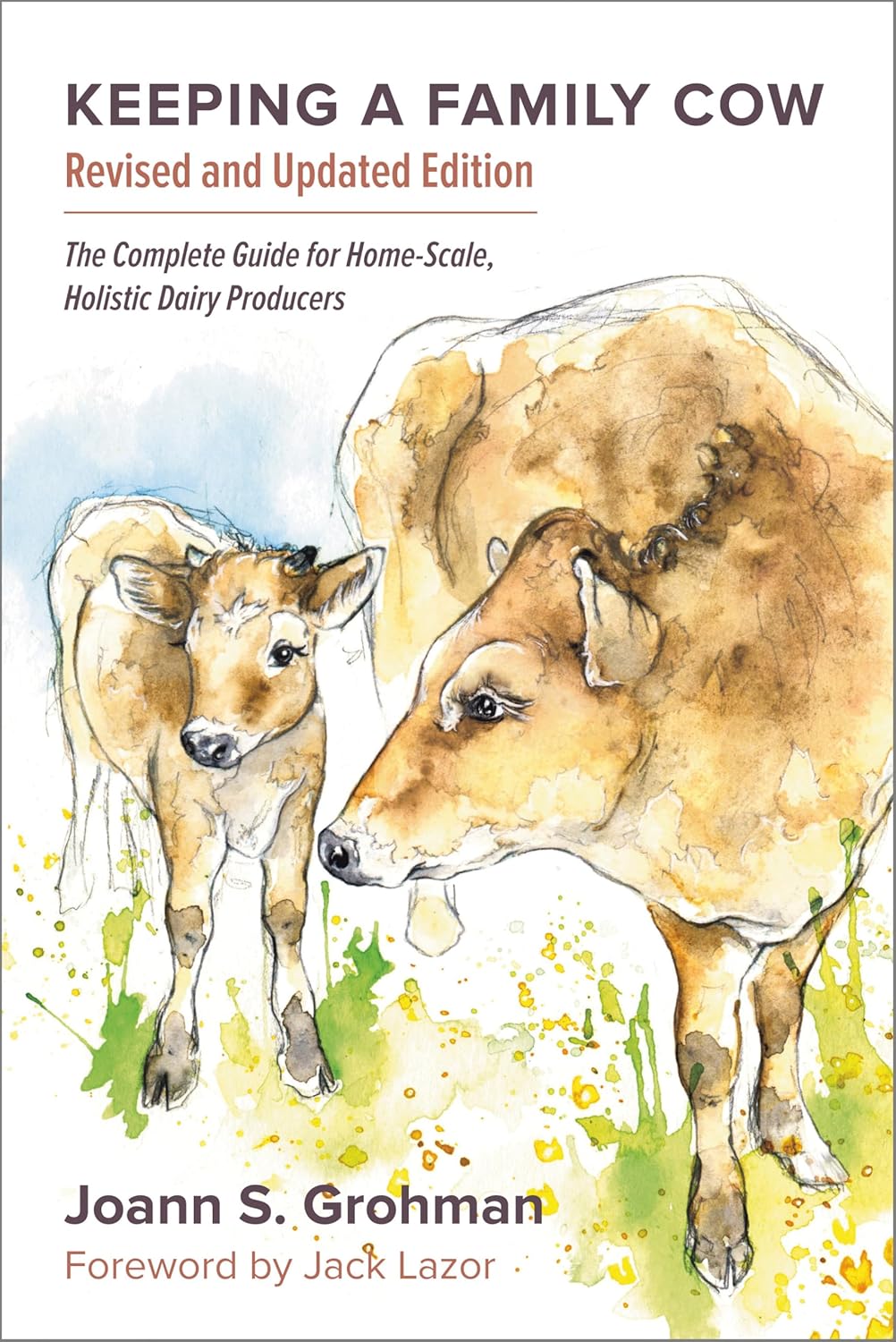Overview
Whether for ethical, “green,” or dietary concerns, many of us are sick of buying factory-farmed products from the grocery store.
Rather than offer a well-rounded solution to the problem, authority figures tell us to “own nothing, be happy,” and to eat insects and synthetic meat.

We have no problem with those who choose to own nothing, eat insects, or eat synthetic meat. However, we don’t believe that such behavior should be mandatory.
While there are many ways to build a better future (and we hope that you are working on one, yourself!), we’ve decided to focus on the food, specifically, beef.
Developing better means of distribution for other food products, such as local produce, would be beneficial, but beef has certain qualities that make it particularly interesting, both financially and in terms of customer behavior. We believe that a tight focus is a key ingredient in building excellence, so, the cow is our humble starting place.
We’ve identified several issues with how beef is currently cultivated, harvested, and sold. Accordingly, we have a plan to improve the status quo.
This article is meant to serve as an overview of our thinking thus far and an invitation to those who would like to collaborate with us on the mission to deliver quality beef at a lower price to American households.
Why a Local Food Marketplace?
As food prices continue to rise, the dominant food infrastructure has some serious problems: across the world, crops are declining in nutritional quality, pesticides and fertilizers are polluting our environment, and biodiversity is declining.
Meanwhile, healthcare costs continue to rise as obesity rates steadily climb.

Image Credit: NIDDK, NIH
The answers are right in front of us: lifestyle changes such as diet and exercise make a tremendous difference in our health.
Let food be thy medicine – Hippocrates
The public is figuring this out: 34% of surveyed Americans predicted that “cutting out processed foods” will be a major health trend in 2025. Likewise, organic produce, once a fringe concept, is gaining tremendous traction. However, USDA Organic standards are flawed and leave room for improvement.
One solution is that every household maintain its own garden. Indeed, we’d likely be a healthier and happier society if that were the case.
However, we suspect that not every household will do so. Moreover, we suspect that not every household will want to grow EACH food product that it consumes. This is therefore an opportunity for specialization and trade.
The key issue is this: friction. Transaction costs. How do these two parties find each other? How do the goods make it from household A to household B?
Luckily, we have several prior examples of how technology can be used to reduce time and money costs in discovery, negotiation, execution, and conflict resolution, including eBay, Expedia, GrubHub, Uber, Airbnb, and Amazon, to name a few.
Therefore, we believe that a local food marketplace has the potential to lower costs and friction in engaging in local food transactions.
Why Beef?
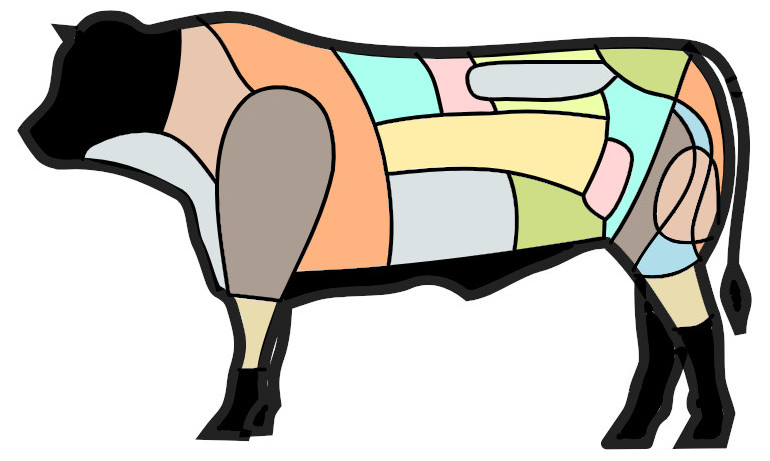
Image Credit1
Larger Transaction Size
When bootstrapping a new venture, it’s logistically simpler to manage fewer, higher-dollar transactions than many, lower-dollar transactions.
Fresh produce is often bought in small quantities to maintain freshness, and at a relatively lower price per transaction.
Since there is already a precedent for end customers buying quarters, halves, and even full cows directly from the rancher, often at a price point north of $1000, we see a natural opportunity to help customers and ranchers find each other and to transact more easily.
Fewer SKUs
A produce transaction is generally a variety of small quantities of different SKUs2. This is logistically harder to manage than a single-SKU order.
Beef, when buying a quarter, half, or whole cow, is a single-SKU order! Can’t beat that.
Resurgence
Since the sugar lie, animal fats have been widely lambasted and receded from popularity, but have been making a major comeback in recent years.
Many are reporting health benefits from eating beef, especially grass-fed, so much that so-called “carnivore” diets are on the rise.
Targeted by Establishment
As referenced in the introduction, beef has been specifically labeled problematic by the powers that be.
While this is arguably a reason to shy away from this business, as there are very powerful individuals who intend to dramatically reduce meat consumption, going so far as to scapegoat the beef industry for “climate change” concerns (a topic that we will delve into another day), we came to the conclusion that SOMEONE should take up the mantle of championing local beef in order to oppose the insane campaign of the tyrant.
The Current System

The Animal
Diet
The majority of American cattle are fed grains, primarily corn.
This is worrisome for three reasons:
US corn is not as nutritious as several other feed grains.
Bio-accumulation: “You are what you eat.” contaminants such as heavy metals, pesticides, fertilizers, or antibiotics in the environment and/or feed will find their way into the animal. Some of it may be excreted via the liver and digestive system, but some of it will remain, ending up in your dinner.
Cows are not well-adapted to digesting corn-based diets, which ends up harming the animal, as well as the nutritional quality of what ends up on your plate, and often leads to medical problems which are often addressed with pharmaceuticals. Which then end up on your plate.
All of this having been said, it seems that regulation is not the ideal solution to this problem. We would prefer to live in a world where each household can make its own decisions on what beef, if any, they prefer to purchase. If households all decided that they want grass-fed beef, ranchers will eventually adapt. If there is a market for both grain-fed and grass-fed, then both types of household should be able to easily purchase what they prefer.
Note: there’s an entertaining and informative documentary called King Corn which details the state of the corn industry in the US and how we got here. It’s worth a watch. It does include a section of corn-fed beef, but this is not the primary focus of the film.
Stress Hormones
Inhumane treatment of animals, such as in so-called “factory farming” operations, is not only a question of ethics and spirituality.
These animals are worse for wear and, by the way, the stress hormones that have been circulating through their bloodstreams will end up on your dinner plate.
What can we do about this?
More humane treatment of the animal during its lifetime.
Slaughtering on the farm rather than away from it. On-farm slaughter has been found to reduce stress hormones up to twenty times.
Unfortunately, there are tradeoffs involved with how and where to slaughter and butcher the animal:
In many jurisdictions, there are strict regulations on which facilities are permitted to butcher an animal for human consumption. This often means that a cow must be transported from the ranch to the processing facility, which increases logistical overhead.
While we don’t have hard numbers in terms of how often this happens, some cows are slaughtered on the farm and THEN transported to the processing facility. This is problematic as there are health concerns regarding meat that has not been immediately drained of its blood.
“Growth Hormones”
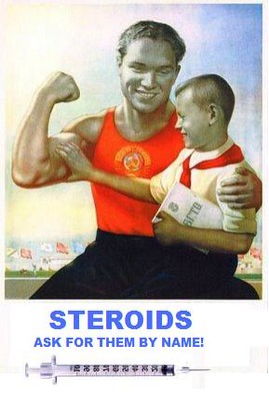
Image Credit4
In order for beef cattle to put on weight more quickly, one common industry practice is to deliver exogenous hormones to the cow in order to stimulate its growth.
Commonly-used hormones include:
- 17β-Estradiol - major female sex hormone
- Progesterone - secondary female sex hormone. for “weight gain and feed efficiency.”
- Testosterone - primary male sex hormone. “to improve growth rate and feed efficiency.”
- Trenbolone acetate (TBA) - androgen and anabolic steroid. To “increase weight gain and improve feed efficiency.”
- Zeranol (ZER) - Synthetic estrogen, used as an anabolic.
- Melengestrol acetate (MGA): suppress estrus, improve weight gain, improve feed efficiency
All of the above are banned for use in beef by the EU as they were unable to establish a safe dosage threshold
Delivery method
Many of these hormones are delivered by an implant in the cow’s ear, some via diet. According to 2013 USDA figures, large scale feedlots are implanting between 91.7 and 100% of animals.
The FDA has ruled that these products have a “zero day withdrawal”, which means that one can legally administer a hormone implant, slaughter, and process the animal all on the same day.
Dosage Risk
However, there is evidence that industry is often exceeding FDA thresholds:
Multiple implanting occurs in daily routine of cattle husbandry, despite various guidelines defining the principle of Good Veterinary Practice (GVP). As all commercial growth promoters are over-the-counter products, correct implantation can neither be guaranteed nor expected.5 (emphasis added)
In conclusion, these experiments clearly identify a risk for excessive exposure of consumers to residues from misplaced or off-label used implants and incorrect dose regimes. In these cases, levels of oestradiol and its 11 metabolites in muscle, fat, liver and kidney from hormone treated cattle may be 2-fold up to several hundred folds higher as compared to untreated meat. The level of increase depends on the treatment regime and the actual hormone levels in the implants used.5 (emphasis added)
17β-Estradiol
Please note that Europeans generally refer to estradiol as “oestradiol.”
Estradiol a carcinogen:
In the case of 17-β oestradiol there is a substantial body of recent evidence suggesting that it has to be considered as a complete carcinogen, as it exerts both tumour initiating and tumour promoting effects.5 (emphasis added)
Estradiol causing DNA damage / mutation:
In summary, additional and conclusive data have now been published in the scientific literature to demonstrate that 17b-oestradiol is genotoxic. 17b-oestradiol induces mutations in various cultured mammalian cells. The reactive metabolite, oestradiol-3,4-quinone, also induces mutations in mouse skin in vivo. The catechol oestrogen-quinones form DNA adducts in cultured cells and in mouse skin.5 (emphasis added)
MGA, ZER, TBA - Effect on Youth
After administering zeranol (ZER), trenbolone acetate (TBA) and melengestrol acetate (MGA) to rabbits, researchers came to the following findings:
Exposure to MGA or ZER during early adolescence caused a transient decrease in serum gonadotrophin levels with a significant increase in oestrone [a weak estrogen]. 5 (emphasis added)
Animals exposed to any of the three hormones during gestation had lower serum concentrations of testosterone later in life, however their sperm concentrations were not significantly affected. 5 (emphasis added)
in utero or pre- and peripubertal exposure to hormones … may affect pubertal development. …prenatal exposure to hormones may be linked to adult cancer risk. 5 (emphasis added)
Vaccinations

Though the establishment would have us believe that all vaccinations are healthful, several authors and doctors, contemporary and historic, including our current HHS Secretary, have come to the conclusion that many vaccines are ineffective at best, harmful at worst.
Indeed, vaccines contain ingredients such as:
- mercury - “even in the smallest doses, cause numerous disorders to the body” - International Journal of Molecular Sciences
- aluminum - neurological damage
- antibiotics - potential damage to gut flora, allergic reactions
- polysorbate 80 - “profoundly impact[s] intestinal microbiota in a manner that promotes gut inflammation and associated disease states.” - 2021 study, Microbiome
- formaldehyde - “known carcinogen” - NIH
- fetal cells, bovine
Some of the above materials have been confirmed harmful through scientific inquiry, while the jury is out on a few others.
One thing that we’d like to draw your attention to is that widely-endorsed products have been found to be harmful in the past, such as cigarettes, have been marketed as “healthy” for many years.
Regardless of your personal relationship to vaccines and vaccination, hopefully you can respect that others should have the right to choose what is put in their bodies.
Movement
While I’ve never been a cow, it’s not hard to imagine that access to acreage, movement, sunlight, is preferable to cramped quarters.
In case we needed science to tell us this, a study published in PLoS ONE found that “Pasture based systems enable cattle to express their natural behavior and are thus expected to provide better welfare than the majority of confinement systems.” In other words, freedom of movement is good for cows. Phew. I’m glad we established that one.
Intuitively, we understand that keeping a roaming animal in a small cage is inhumane. And yet, this is standard practice in feedlots.
Is the feedlot an economic necessity? Should all beef cattle pass through feedlots? We suspect that some buyers will be OK with the ethical and nutritional repercussions of so doing, and we’d like to provide the ability for the customer to make an informed decision.
Rotational Grazing
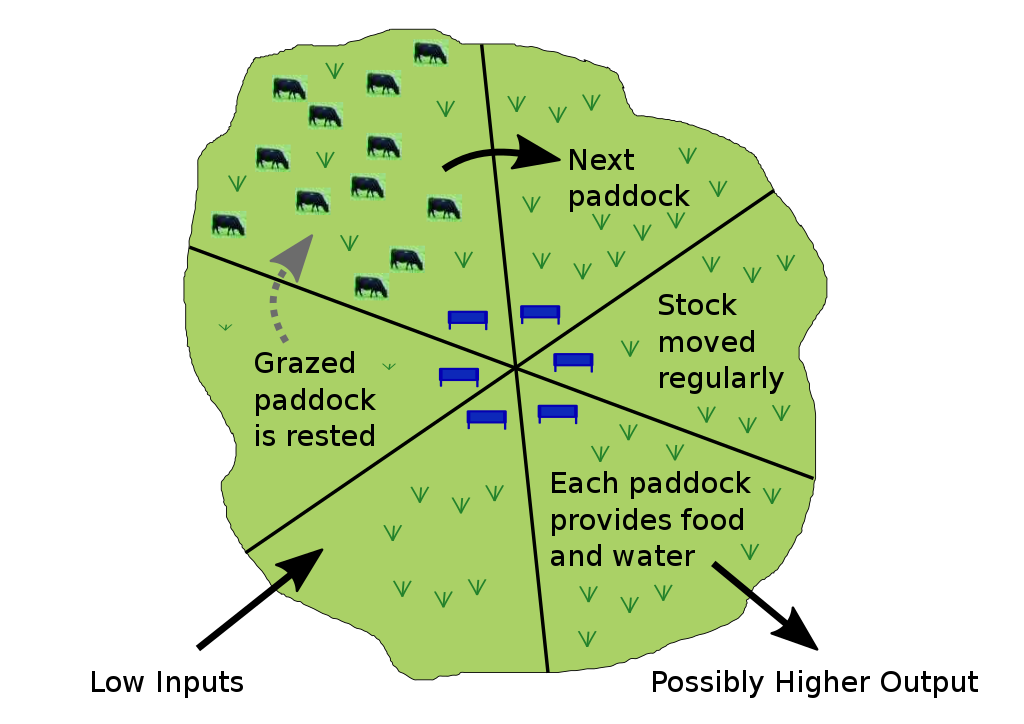 Image Credit6
Image Credit6
We are often told that cattle farming is extremely resource-intensive and must be eliminated in order to sustain mankind on this planet. While a thorough discussion of “global warming” / “climate change” and “overpopulation” is extraordinarily relevant to this conversation, I hope you understand if we postpone these topics to a later date as they are highly charged and deserving of their own time and space. Therefore, let’s pretend for today’s conversation that there are ways of cultivating beef in a sustainable manner. How might we do so?
In order to reduce the required acreage, techniques such as rotational grazing can be applied in order to gain a greater yield per acre. Experts such as Joel Salatin have found that rotational grazing can increase the grazing capacity of acreage by as much as 100%.
Forgotten techniques such as electroculture are also returning to the fore.
The establishment has shown itself to be draconian in its leanings, often suppressing information that is beneficial, but we are confident that the human spirit shall overcome.
Logistics & Processing

Image Credit7
Transportation
This current system uses a great deal of transportation resources. Some estimates put transportation as high as 14% of total energy use of the food supply chain.
A 1969 DoD study concluded that, “from conception to ingestion, the beef travels a distance of over a thousand miles.”
According to user data on Foodmiles.com, the average distance that beef traveled from source to end customer was 4,613 miles.
A 2003 study from the Leopold Center for Sustainable Agriculture at Iowa State University affirmed the oft-quoted average distance traveled of 1,500 miles for US produce, and went went on to compute, when comparing produce grown in Iowa and shipped to Iowa businesses versus produce purchased from the national food supply chain, a weighted average of 56 miles for the local produce versus 1,494 miles for the conventionally-sourced produce.
In addition to time, money, and environmental costs, these long transportation distances also incentivize strange practices, such as breeding tomatoes to be firm and robust to handling, rather than delicious and nutritious.
While it’s great that we have the ability to move food across such great distances, it seems to us that society would benefit by reducing the average distance that food travels.
Carbon Monoxide
Much of the beef sold in the grocery store has been treated with carbon monoxide to improve its appearance.
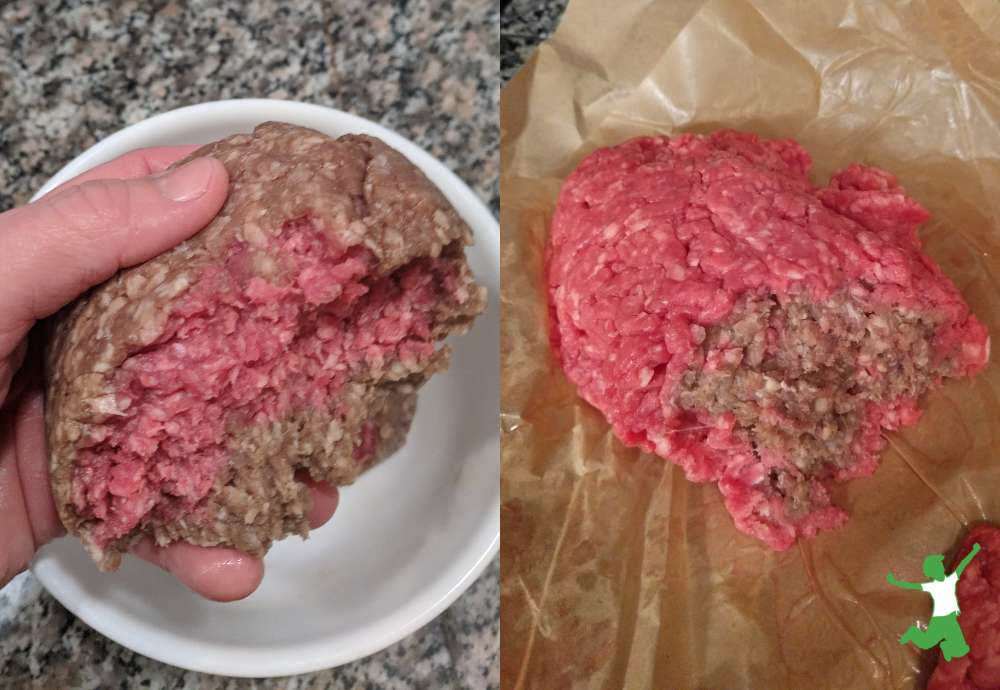 Photo Credit: The Healthy Home Economist
Photo Credit: The Healthy Home Economist
Local grassfed from local butcher on left, Whole Foods “organic” on the right. As we can see, even “organic” retailers will sell meat that has been treated with carbon monoxide to improve its visual appeal.
Yes, carbon monoxide, the same one that displaces oxygen in your cells and can cause tissue damage and/or death. Milder symptoms include headaches, confusion, and tiredness. Carbon monoxide exposure has also been linked to increased risk of autism.
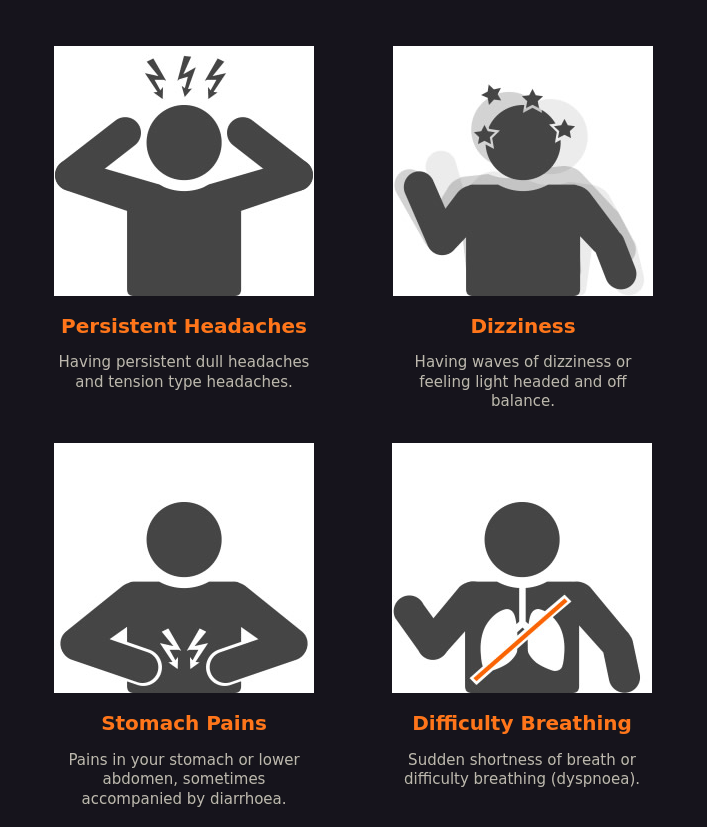
Photo Credit: Safelincs Ltd
Secondly, this practice is not permitted in the EU, for the very reason that it may conceal spoilage.
Thirdly, the USDA’s Food Safety and Inspection Service (FSIS) has explicit provisions against “making products look better or of greater value than untreated products or masking normal spoilage indicators.” Which makes it particularly strange that this practice, which is specifically intended to increase perceived freshness, is allowed.
An excellent overview of the risks of carbon monoxide treatment can be found here.
Margins
Let’s also consider how many steps sit between the rancher and the customer in the current system.
In an extreme case, there may be as many six intermediaries between the rancher and the customer:
Rancher -> Stocker -> Feedlot -> Processor -> Value-added Manufacturer -> Wholesaler -> Retailer -> Household
While it’s possible that the above is the ideal shape of the beef supply chain, there are precendents in other markets of reducing the supply chain down to a smaller number of players. For example, Dell, Apple, and Warby Parker are each examples of going “direct-to-consumer.”
Thus, providing ranchers the ability to sell directly to households at scale, the future supply chain could look more like this:
Rancher -> Processor -> Household
By so doing, we hope to reduce costs across the supply chain in order to create more value for both the rancher and the customer.
Just-in-time
One advantage of the “factory farming” approach is that there is a steady stream of freshly-harvested beef coming into grocery stores throughout the year. Many smaller operations will harvest much less often than that, often 1-2 times per year.
However, if we are able to achieve a high-enough level of customer demand, we should be able to coordinate the distribution of fresh beef throughout the year, as the rancher and the processor are most concerned with how well they’re being paid and, theoretically speaking, the quality of the good/service rendered. Therefore, there is a possible scenario where we are able to compete with the incumbent system in terms of steadiness of supply, while also offering a higher-quality product. In simple terms, there may be a future where fresh, local beef can be ordered as easily and quickly as an Amazon package.
Many other industries have seen the benefit of a “Just-in-Time” approach to inventory management. Could local beef be next? This is several years away from us, but it’s encouraging to realize that some of the downsides of the current rancher-direct approach may fade away over time.
Incentives
Commoditization
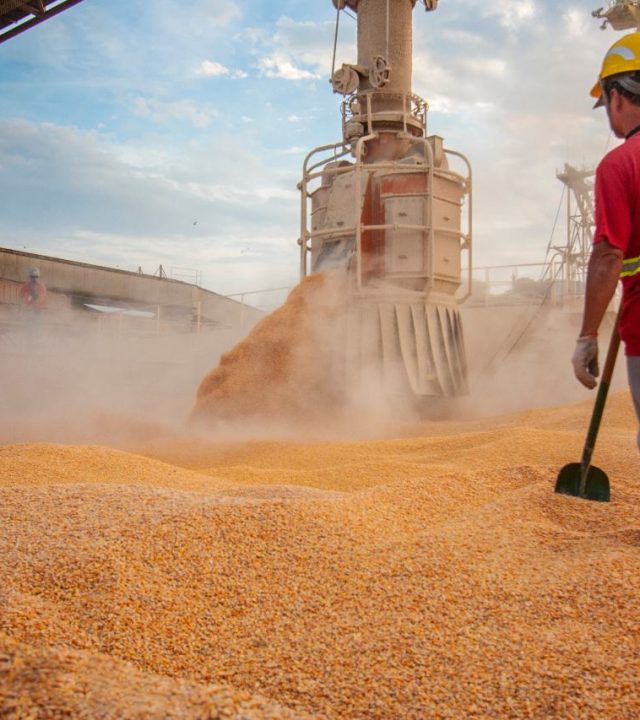
Image Credit: Alfa Maritima
If we shop for a product as if it were a commodity, we encourage a race-to-the-bottom.
So long as our definition of the commodity is complete, then a race-to-the-bottom may well be a good thing. But as we’ve seen from the USDA processes, if the definition of commodity is not complete, corners will be cut in an effort to minimally satisfice the standard.
This behavior can also be observed in most airlines. While it’s hard to say for sure how much of this is “chicken” versus “egg,” most customers treat the airlines as “fungible” (interchangeable) to one another when making a purchasing decision, and, as a result, the differences between the major airlines are mostly forgettable.
We need to keep this in mind as we build a better beef supply chain for the future: by ensuring that products have multiple dimensions on which to differentiate themselves, we can reduce the risk of converging on an inferior product.
Centralization
Perhaps it should come as no surprise that 80% of the US beef supply is owned by four players.
In many industries, there are economies of scale, and incentives to roll up competitors into one corporate behemoth, yes, but one danger of an oligopoly is that oligarchs can use their market position to lobby the government into adopting policies that favor the oligopoly.
Regulation, however, is a tricky topic. The line between “consumer protection” and “regulatory capture” is not always clear. One sometimes needs to be a subject-matter expert in order to sniff out a bill that is anti-competitive, dressed up as “consumer protection.”
We hope that by providing easy access to processors and end customers, we can reduce the barriers to entry and encourage a more competitive market.
Accountability
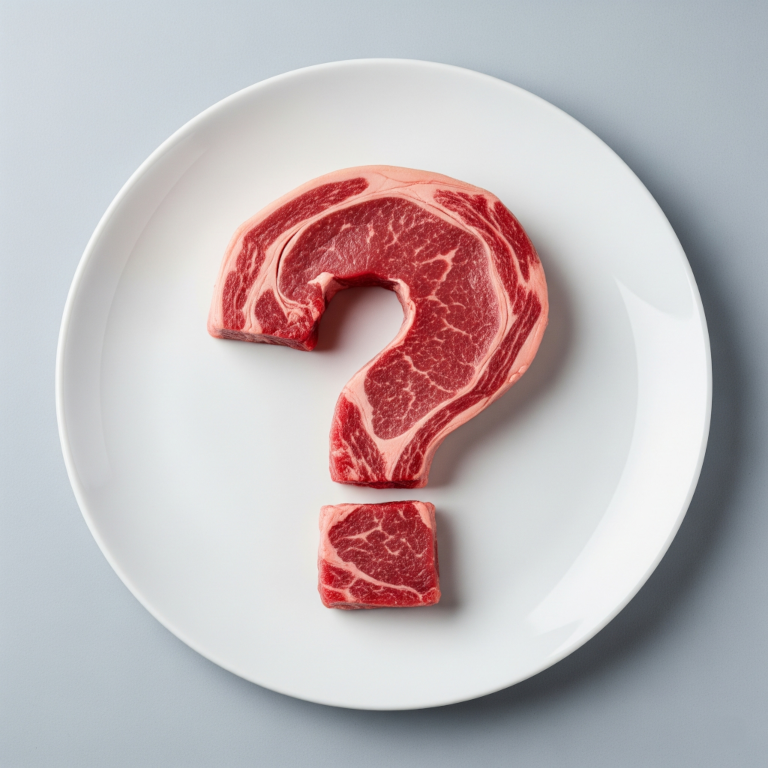
One issue with the current system is that customers have no idea where their meat is coming from.
In theory, the USDA ensures quality, but if one has any concerns about USDA’s criteria or enforcement mechanisms, good luck!
Moreover, by anonymizing the rancher-end customer relationship, it eliminates any incentive to differentiate or stand out: the lowest common denominator that meets a given USDA inspection level (Prime, Choice, Select, etc.) is incentivized and thus what producers will rally around.
Something that we hope to accomplish is to maintain opportunities for ranchers to differentiate themselves such that excellence is incentivized and those customers who value certain cultivation practices have the opportunity to vote with their wallets.
Pre-sale
In finance, the futures markets famously gave farmers the ability to sell their crops before harvest. Perhaps at a lower rate than they would make by waiting, but A. having the money ahead-of-time is valuable (time value of money) and B. having someone else take on the financial risk of a bad harvest was very appealing to many farmers.
By the same token, many cattle ranchers will pre-sell cattle to consumers ahead of time: wholes, halves, and quarters.
Note: this is partly to reduce the regulatory overhead as a USDA meat inspection is only required for meat that is to be sold to others. Therefore, if one pre-buys the cow before harvest, it is already privately owned by the end customer at the time of processing, and no USDA meat inspection need occur.
Therefore, there is a multi-fold financial incentive for ranchers to pre-sell their cattle:
Compared to selling to a large processor/wholesaler, cattle sold directly to the end customer can command a much higher price per lb.
Pre-selling to the end customer means no USDA meat inspection, avoiding an additional cost.
As above, pre-selling means improved cash flow, which could reduce the need for short-term lending. By reducing the need for lending or other financial products, these savings could be either retained as profit or passed onto the customer in the form of lower prices.
Pre-selling is an opportunity for price discrimination. For example, price-sensitive customers may be willing to pre-order beef further in advance to get a lower price, while time-sensitive customers are likely willing to pay a premium to jump to the head of the line.
Pre-selling means better knowledge about customer demand at harvest time: there may be some situations where a rancher may opt to harvest sooner or later than originally planned, based on market conditions.
Compared to selling processed meat, pre-selling means a reduced (possibly zero) need to store and manage inventory after harvest.
Pricing
As above, price discrimination is an under-explored technique in the beef industry. Industries such as the airlines have spend a great deal of effort on dynamic pricing systems. We suspect that there may be an opportunity to do the same in beef.
Likewise, could auction techniques also be used? Most American consumers are accustomed to fixed prices, while in most forms of commerce, negotiation is part of the game. A fixed price is therefore something of an artificial construct, meant to expedite each transaction. In the context of pre-selling cattle, there may be an opportunity to incorporate auctions in order to find the true market price.
Alternatives
Rancher Self-hosted Ecommerce
Some ranchers have already figured out that the current system is not working and have implemented their own systems for taking customer orders and scheduling pickups, deliveries, and drop points.
If this is working for them, more power to them, but we believe a specialized firm will be better-able to find efficiencies and streamline local beef logistics, as there is coordination that must occur between the rancher, the processor, and the end customer. We imagine that, by working with these three parties, we’ll be able to find new ways to create value for all involved.
Grow-your-own
(While focused on keeping a cow for dairy rather than for beef, the above book is an excellent and eye-opening look into the modern dairy industry, including a section on harmful practices which are now considered “standard.”)
Some individuals have the ability to grow their own beef, but some of us don’t have the land, the knowledge, or the interest to do so. I personally am an advocate of self-sufficiency, but I do recognize that, firstly, we should not impose this as a requirement on our fellow man, and, secondly, we each can benefit from having the ability to outsource aspects of our lives to specialists.
Marie Kondo, tidying expert, famously teaches people to tidy not so that they can become tidying professionals – not at all! She is a professional tidying expert because she is absolutely crazy about the topic. By the same token, perhaps not each of us has to raise cattle but can rely on those in our local community who are absolutely crazy about the cultivation of cattle.
Conclusion
In conclusion, we’re confident that not everyone is onboard with synthetic meats, eating insects, and/or vegetarianism. Furthermore, we believe that a diet of healthful foods that are cultivated in a sensible, holistic, dare we say “enlightened,” manner is the way forward.
Our current beef infrastructure is not an ideal approach to the problem and we are confident that a better beef supply chain awaits us. We do not claim to be great authorities on the topic, but are taking the responsibility upon ourselves to “be the change.”
Be the change you wish to see in the world. – Mahatma Gandhi (attributed)
If you’re a rancher who would like to sell to end customers, we’d love to work with you. Please email us.
If you have input on how to make the future of American beef even better, please email us.
If you’re a customer who would like to buy local beef, please join our mailing list.
We look forward to building a better beef supply chain with you.
– David
–
David Kay
localbeef.net
Title Image Credit8
“Beef cuts Brazil” by MarioM is licensed under CC BY-SA 3.0. ↩︎
Stock Keeping Unit. It’s usually the number on the barcode that gets scanned at the checkout. ↩︎
“Factory Farm” by celesteh is licensed under CC BY 2.0. ↩︎
“Steroids” by Mike Licht, NotionsCapital.com is licensed under CC BY 2.0. ↩︎
EUROPEAN COMMISSION - HEALTH & CONSUMER PROTECTION DIRECTORATE-GENERAL - OPINION OF THE SCIENTIFIC COMMITTEE ON VETERINARY MEASURES RELATING TO PUBLIC HEALTH ON Review of previous SCVPH opinions of 30 April 1999 and 3 May 2000 on the potential risks to human health from hormone residues in bovine meat and meat products ↩︎ ↩︎ ↩︎ ↩︎ ↩︎ ↩︎ ↩︎
“Grazing, rotational” by Ian Alexander is licensed under CC BY-SA 4.0. ↩︎
““Various vehicles travelling down straight highway”” by “Horia Varlan” is licensed under “CC BY 2.0”. ↩︎
“Beef Cattle” by grassrootsgroundswell is licensed under CC BY 2.0. ↩︎
Last modified on 2025-05-21
